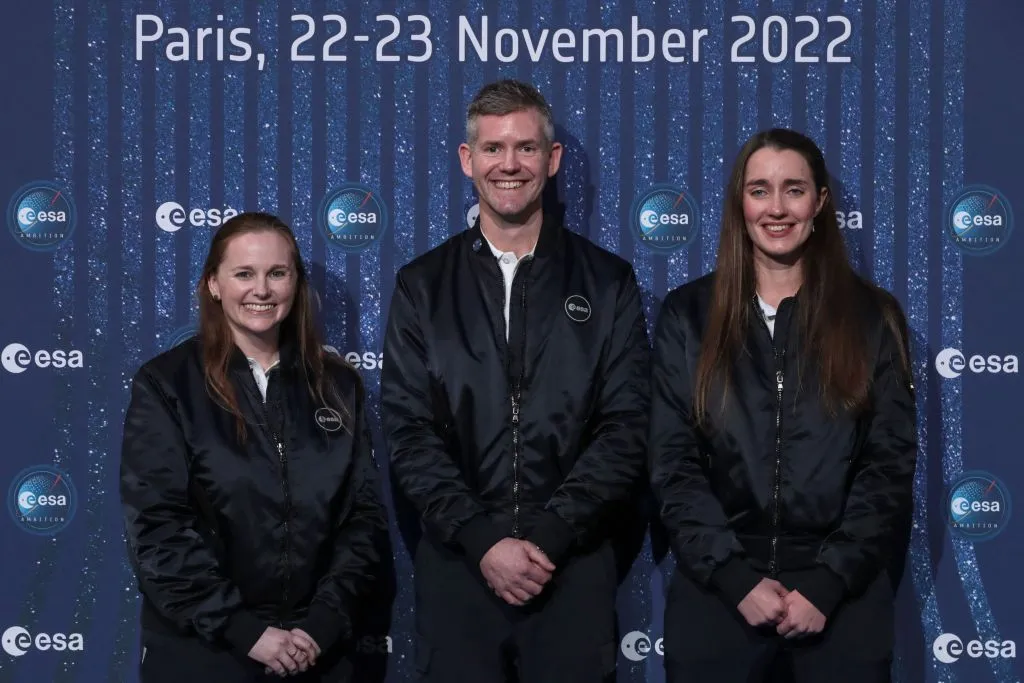UK astronaut John McFall of the European Space Agency is a former paralympian on a mission to help open up spaceflight to people with disabilities.
It feels like within our lifetimes, spaceflight will become even more commonplace, and that relatively soon citizens will be regularly taking flights into Earth orbit.
But what opportunities are there for people with physical disabilities who want to venture into space?
We got the chance to speak to para-astronaut John McFall, one of the many ESA 2022 astronaut candidates, about his work investigating how disabled astronauts like him could fly in space.
Read our interview with UK ESA astronaut Rosemary Coogan

What are you currently up to?
I officially started with the European Space Agency in June 2023 to begin the Fly! Feasibility Study, which is looking at the requirements for someone like myself [a lower-limb amputee] to fly on a long-duration mission to space.
We’re investigating how my disability and my prosthesis might impact the requirements to fly in space, how we make up any differences and what alterations or mitigations might be needed.

How do you assess what those requirements might be?
We looked at all the different stages of spaceflight.
We investigated what would be required for an astronaut to undertake basic training: things like winter and sea survival training, centrifuge familiarisation and experiencing low-pressure environments.
Can someone with my disability undergo basic training and interface with certain pieces of equipment?
Then there’s spacecraft operations and what would be required of an astronaut to undertake all the emergency and safety procedures on a spacecraft or the space station.
Medical was another domain, covering things like whether I can do the exercise countermeasures required for a long-duration mission.
We’ve already determined that wearing a prosthesis in space would be a necessity for some activities – so, is fluid shift going to be a problem with regard to the volume of my stump and socket fitting?
Finally, we looked at crew support such as clothing, supporting equipment and even quarantine facilities.
What have you discovered?
Early on, we recognised that the ability to do emergency procedures and meet safety requirements warranted assessment, but there have been no huge sticking points.
What we found is that every astronaut’s needs are relatively individual.
We’ve looked at my disability, and yes, you can extrapolate that to similar lower-limb deficiencies, but it’s difficult to translate that to a broader pool of disabilities.
You have to take each case separately, look at their requirements and go from there.

What’s being done to make space accessible for everyone?
In order to do the study, we had to make some assumptions, and one of them was that it would be a long-duration flight to the International Space Station.
But this is good timing for the feasibility study because all these other programmes are early in their evolution.
Once we’ve done this study – and if a few years down the line someone with a physical disability has actually flown to low-Earth orbit – we can feed that data into programmes being developed.
From there, we could potentially consider human space exploration for people with disabilities going further than low-Earth orbit.
What’s been your favourite part so far?
I loved the winter survival training because I love being in the mountains, in the cold.
But what I’ve really enjoyed is interacting with a wide range of people, bringing this study to them and seeing their reactions.
Everybody has been so complimentary of what we are doing, both within ESA and among international partners as well.

Will we one day see a parastronaut fly in space?
Absolutely, and I think within the next few years.
ESA have said that they’re keen to get someone with a physical disability to fly within the lifetime of the ISS, if we’ve demonstrated that it’s feasible.
At this stage, it’s looking very positive.
This interview appeared in the October 2024 issue of BBC Sky at Night Magazine.
